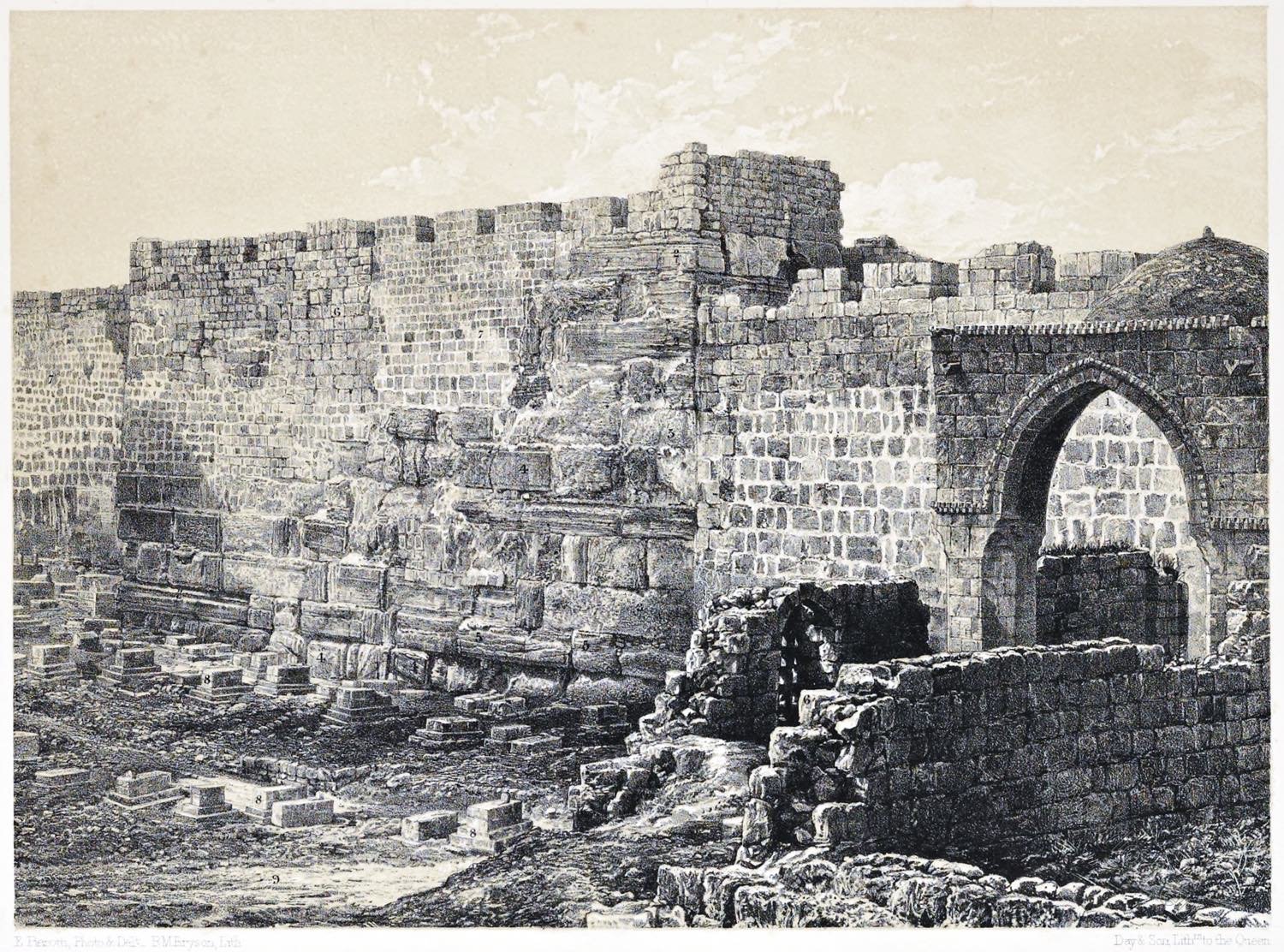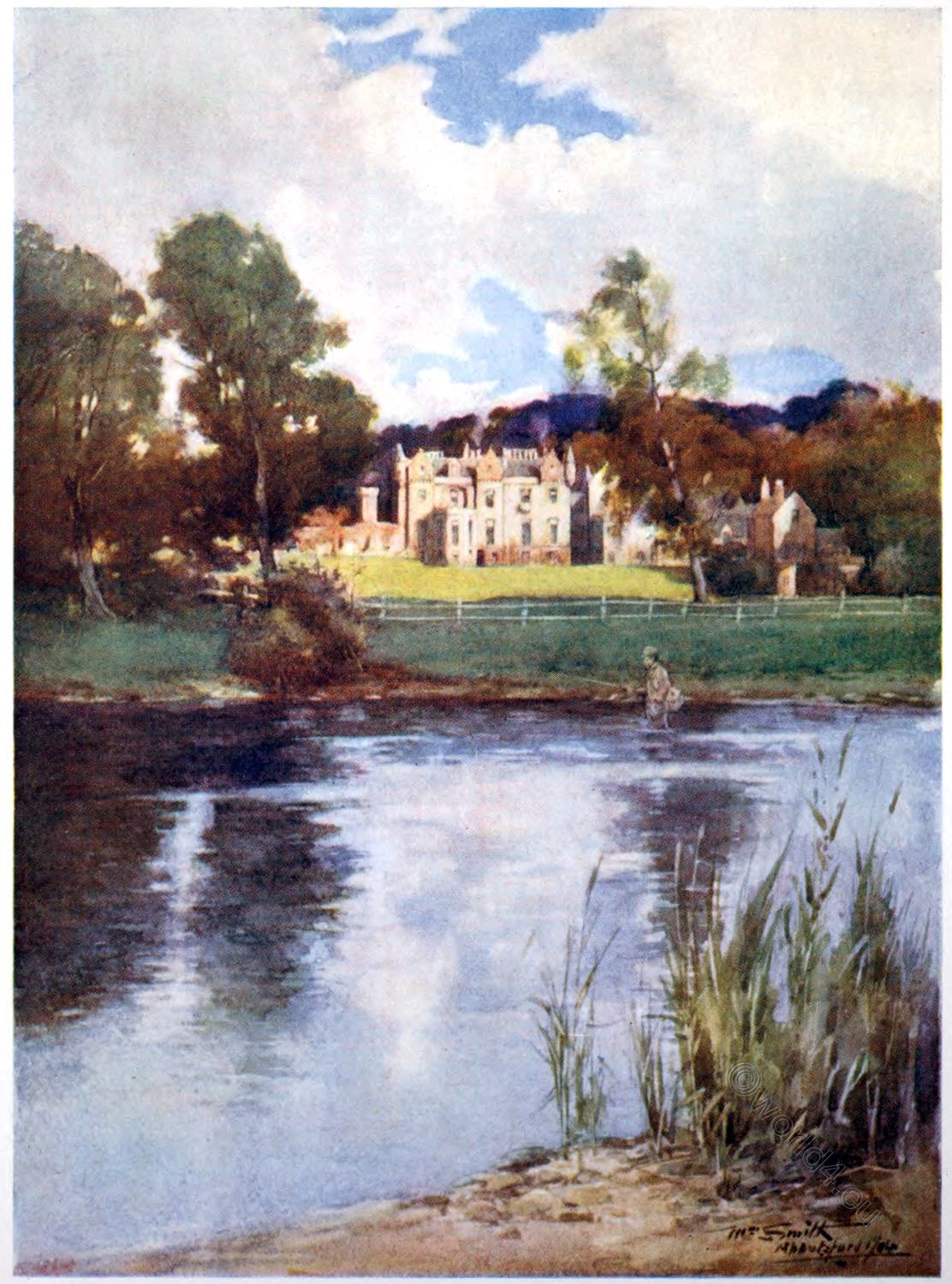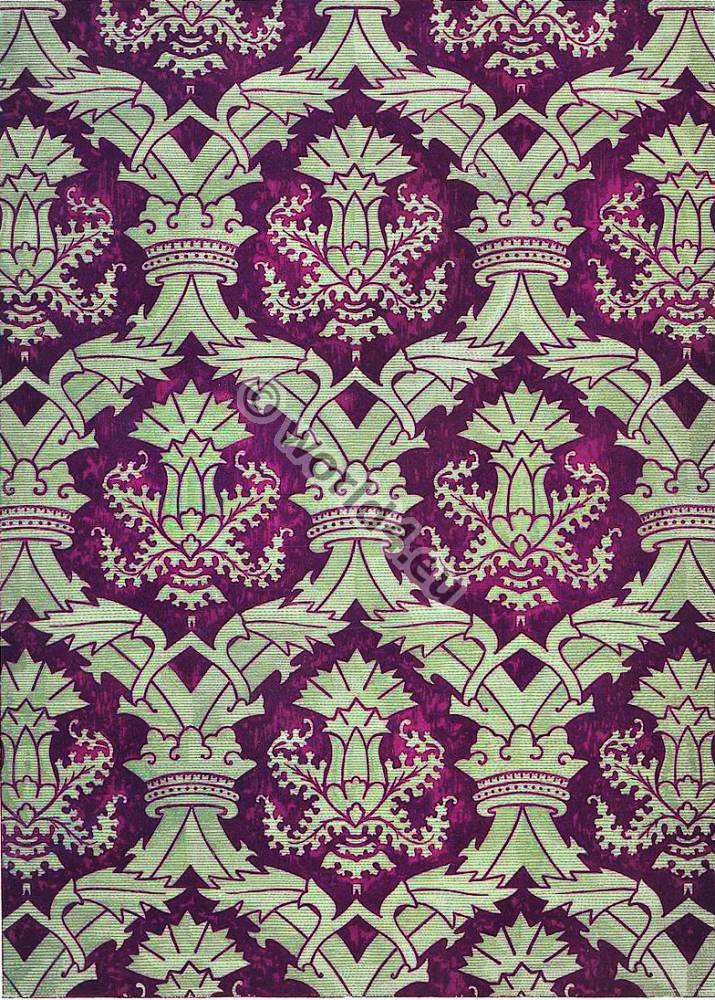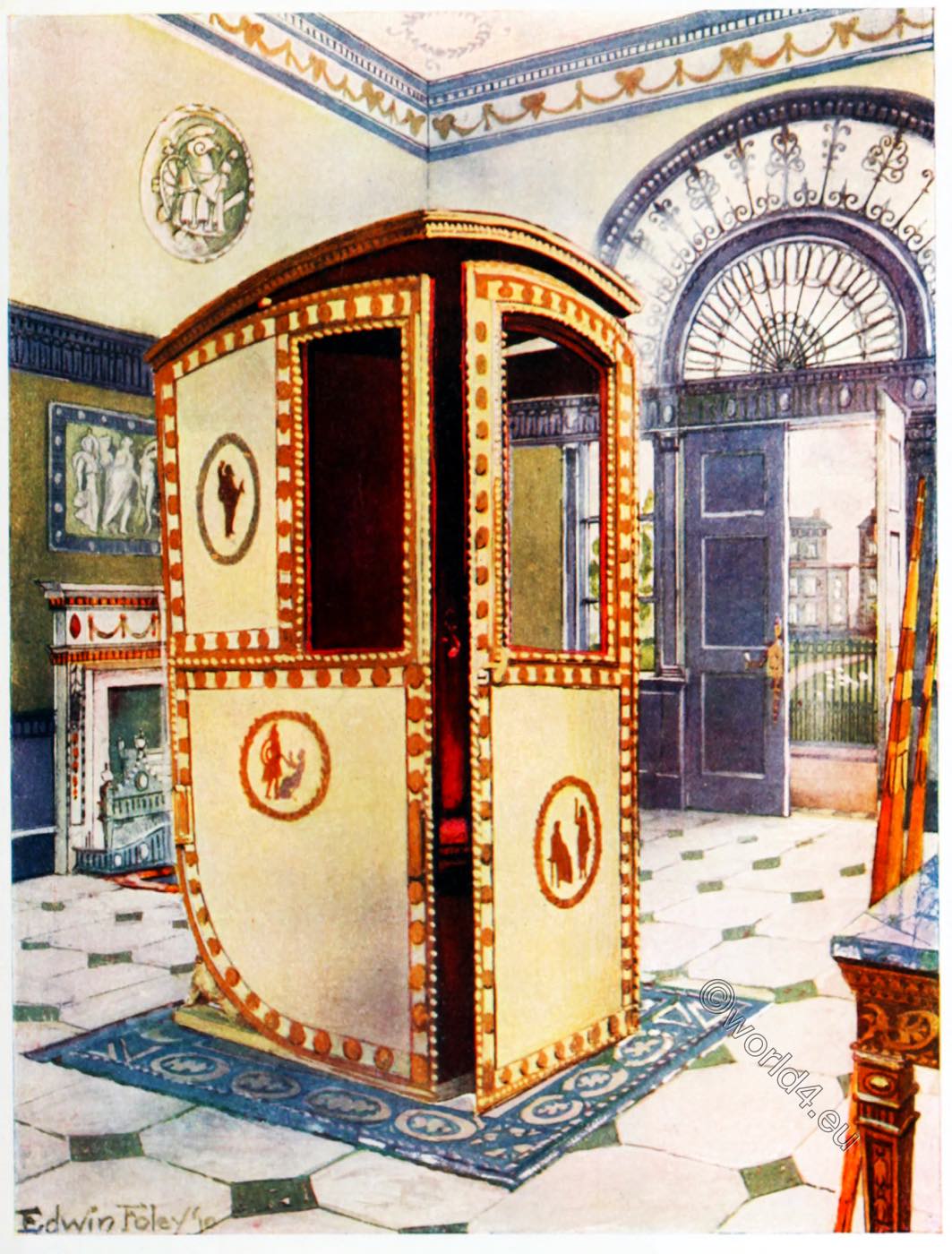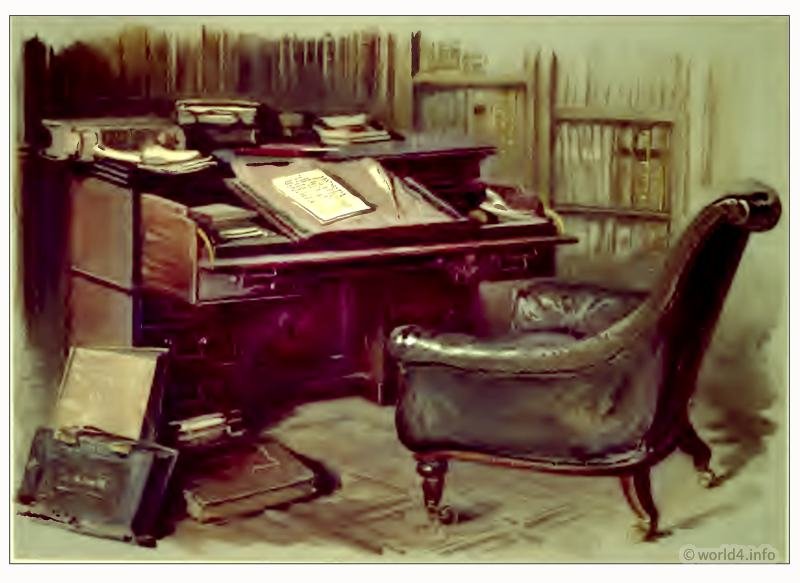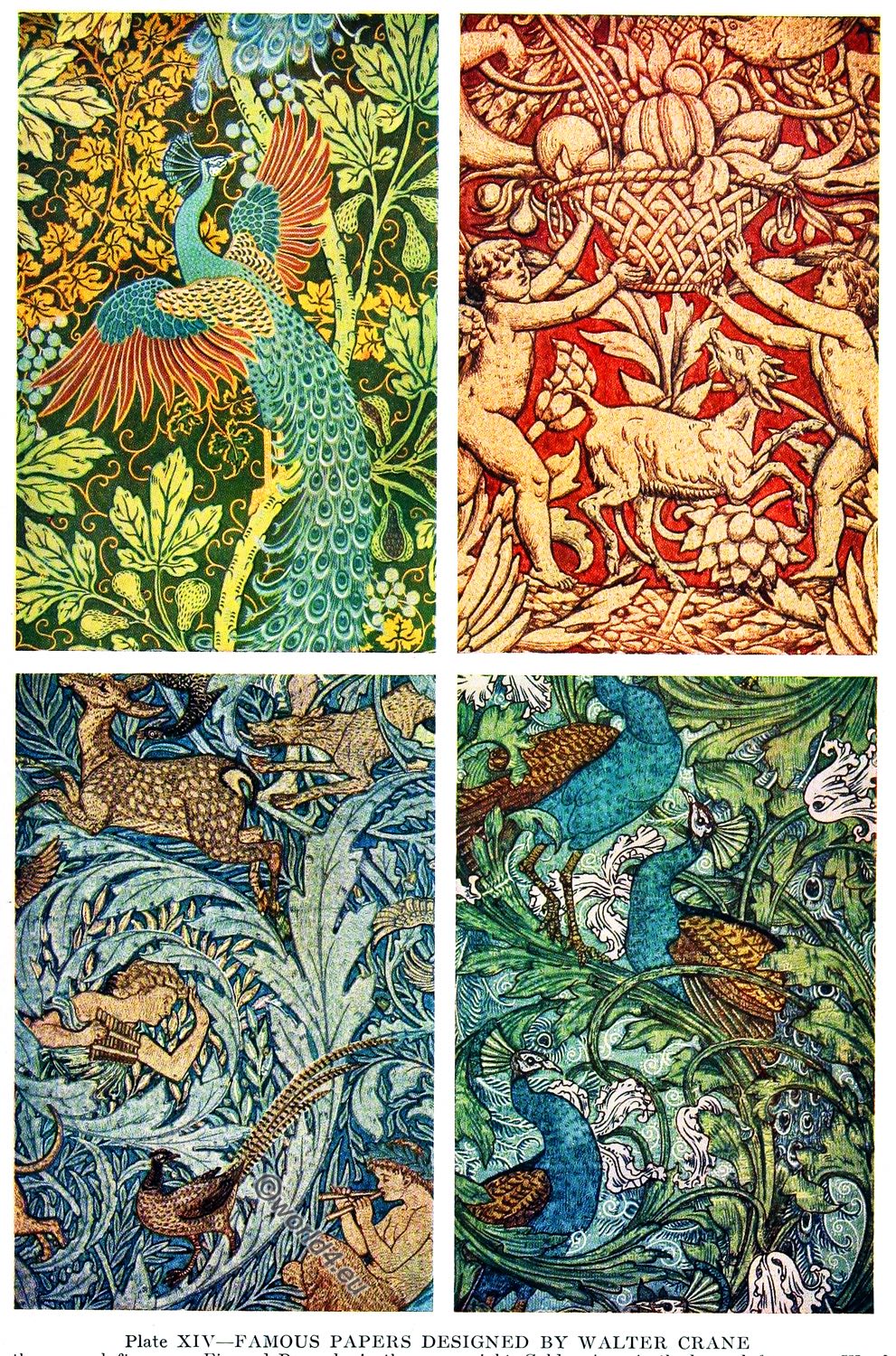
In the upper left corner, Fig and Peacock; in the upper right, Golden Age; in the lower left corner, Wood Notes inspired by Shakespear’s Midsummer Night’s Dream; on the right, Peacock.
WALL PAPERS
By the middle of the nineteenth century the development of roller printing was producing in chintzes and wall papers the same diminution of motifs that the jacquard attachment was producing in damasks and brocades. Also, the cheaper methods of making paper and the poverty of the world caused by the Napoleonic wars favored wall papers as compared with chintzes. Most significant of all, the blind and stupid adoration and imitation of ancient Classic had caused artists to neglect decorative art in their yearnings after the supposedly miraculous mysteries of representative art.
Plate X
WALTER CRANE’S “MACAW”, 1908.
Wallpaper. Colour woodblock print on paper. In many respects the most delightful paper produced by the famous English firm that William Morris founded. Note the strength of the design and the gentleness of the colouration.
Finally came the voice of William Morris, crying in a decorative desert. He worked himself with the bobbin and with the block, in order to get close to the processes and the techniques appropriate to the materials. He designed wall papers that are still justly in vogue and printed from the original blocks, and together with Walter Crane, revivified wall paper design in hand-blocked papers so splendidly that the result was apparent even in the machine papers.
Fifteen years ago the wall paper industry in America was in a sad way, and justly. The patterns were mostly bad and badly executed. Wall paper manufacturers and salesmen talked price so vociferously that quality was frequently overlooked. Nearly all of the so-called designers were mere manipulators of pattern and utterly void of inspiration and of art.
Since then there has been a wonderful uplift. The vagaries of Art Nouveau, which, for a time, hindered the development of American wall papers alarmingly, have been forgotten and from the idiocies of the European Futurists we have remained aloof. Instead of merely rehashing modern European papers our designers are now studying the documents of the pastdamasks, brocades, velvets, chintzes, tiles, decorative paintings and tapestries and wall papers-and producing patterns adapted for the comparatively small repeats of roller printing today. Freely during the past ten years have they borrowed from contemporary chintzes and cretonnes, som.etimes wisely, but often with a slavish fidelity that encouraged the use on the walls in paper, of the same pattern that in chintz upholstered and draped the furniture and windows, paralysing the occupants of the room with constant bombardment of monotony.
The Arts and Crafts Movement was a British movement in art and especially in product design from the middle of the 19th century to around 1920. In the age of mechanical production, they wanted to return to the craft. Other important representatives included Morris Walter Crane, Arthur Heygate Mackmurdo, Charles Voysey, Charles Robert Ashbee, Dante Gabriel Rossetti and William Lethaby.
Source: Decorative textiles; an illustrated book on coverings for furniture, walls and floors, including damasks, brocades and velvets, tapestries, laces, embroideries, chintzes, cretonnes, drapery and furniture trimmings, wall papers, carpets and rugs, tooled and illuminated leathers by George Leland Hunter. Publisher: Philadelphia and London, J. B. Lippincott company; Grand Rapids, The Dean-Hicks company, 1918.
Related
Discover more from World4 Costume Culture History
Subscribe to get the latest posts sent to your email.


